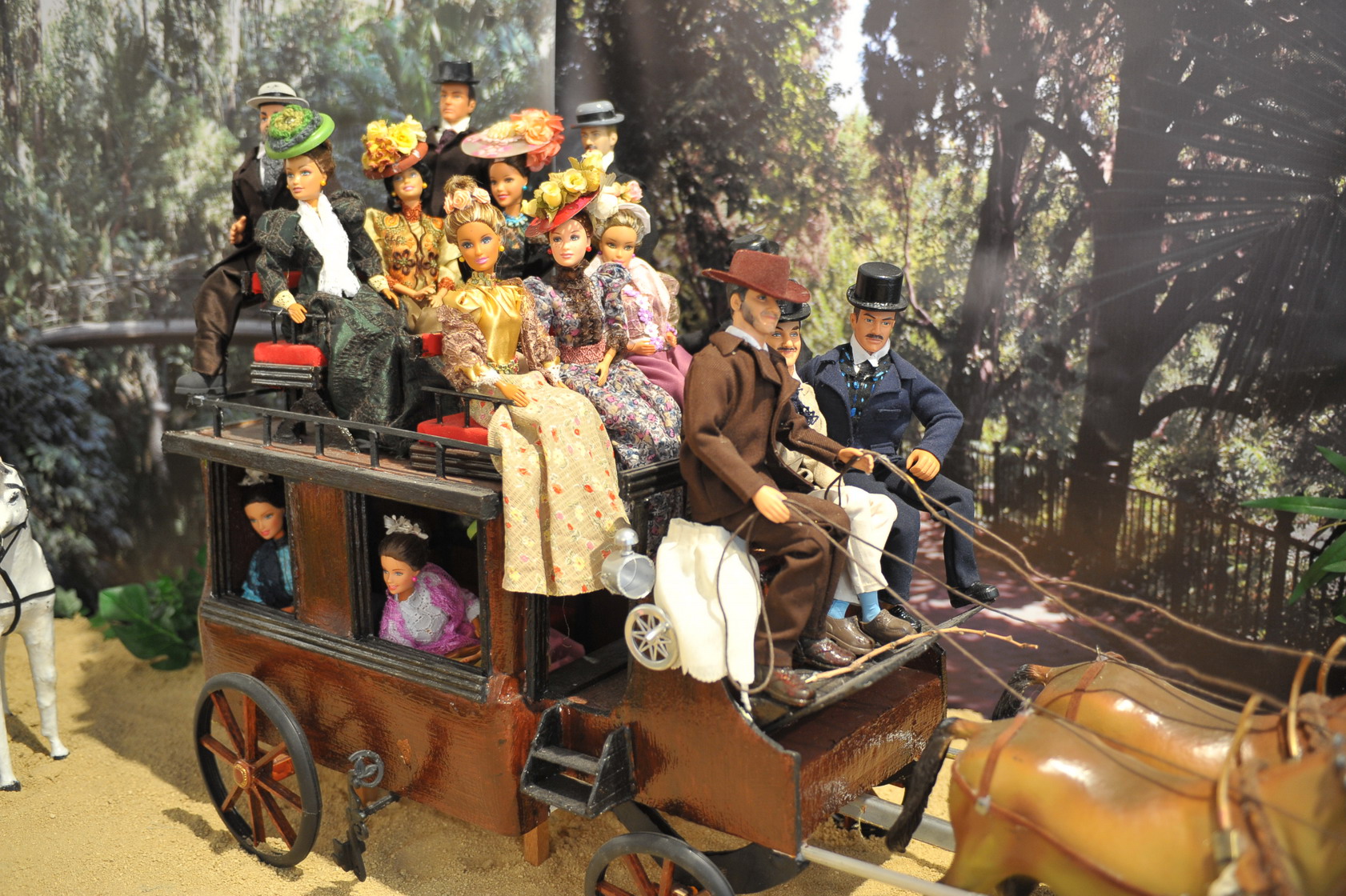Exhibitions
Temporary exhibitions are normally located at the ground floor of Casa del Administrador. Sometimes they move to the garden or the Casa Palacio.
La Concepcion houses a permanent exhibition at the Casita del Jardinero. Some scenes of the origin of the garden are told with Barbie dolls dioramas.
January: Siobhan Riordan. "Edén expresionista". Painting
February: Joaquín Cardalliaguet. "Amalia Heredia y el jardín". Mixta
March: Vicente Denis Corrales. "Los logros de Hércules. Los enemigos, las víctimas y los vencidos". Acílico
April: Jeaninne Cook. "De Mallorca a Málaga, Trazando la Naturaleza en Plata".
May:Alexander von Humboldt y los orígenes de la Ecología.
Jun: Catalina Coronado Guerrero. "Emboscados". Mixta; acrílico, acuarela.
July: Selection of participants in the painting. Asc. Friends.
August: Selection of participants in the painting and photography contest
September: Jocelyn Marmottan. Jardín Habitado, in Natura.
October: Gill Eardley. Ilustraciones botánicas del jardín.
November: Colectiva. Gabinete Hyde. "Jardín ocurrente".
December: Fernando Luque Cuesta. Joyas de La Concepción.
Ilustraciones botánicas del jardín, de JGill Eardley.
From October 4th to 29th 2025
The Friends of La Concepción Association, organizer of this exhibition, recently received a donation of 33 works by artist Gill Eardley, 24 of which will be featured in this exhibition.
In each stroke of Gill Eardley's pencil, a moment is suspended, like a drop of dew before it falls. Her hand found in the Japanese pencil a way to listen to the plant world with the delicacy of someone who knows how to be silent. As in Japanese wabi-sabi, the beauty of her drawings lies not only in the splendor of the flowers, but also in the crack, in the curving leaf, in the flower that gently withers and reminds us of the inescapable cycle of the seasons. In these illustrations, there is no room for regret, no smudges, no corrections; this technique is performed with surgical precision.
For hours, sitting among the paths of La Concepción Garden—her sanctuary of study—Gill did not copy photographs or seek artifice. She looked, breathed, and let the form slowly reveal itself under her pencil, on paper, without fixatives, as if the work were left open to the air, vulnerable and alive. Her inventory includes feijoas, lemons, physalis, medlars, oats... common names, yet transformed into unique presences that must be contemplated with the respect of someone reciting a haiku.
These illustrations are testimony to a silent practice that embraces impermanence: each petal, each seed, each bulb is traced with a care that resembles that of monks raking the gravel of a Zen garden. Walking through the room, visitors will encounter an intimate landscape where flowers are not just botany, but memory and transience; where nature is not a subject but a teacher.
May this exhibition also be an invitation to look slowly, to discover the eternal in the ephemeral, and to hear in the wilted flowers the same subtle music that Gill knew how to hear and translate into color. Curated by Agustín Linares.
The history of La Concepción told by Barbie
The idea of using dolls to recreate the garden's history was conceived by the artist Alberto Martin, who has been putting together displays with Barbie dolls for many years. After studying a number of late 19th-century photographs, mostly from the Silvela Legacy, he created a series of almost identical scenes using not only the world-famous Barbie but also Ken, Madelman and other similar figures. Sponsored by the Malaga Foundation and the Friends of La Concepcion Association.
The aim of this exhibition is to portray both a key period in the history of La Concepcion and the Bourgeois lifestyle of the time in a way that will appeal to visitors of all ages. All of the materials used in the displays have been recycled: bottle tops, sink racks, clothes pegs, pencil sharpeners, pin cushions etc. Each figure is dressed in a different costume and hat made from dressmakers' cuttings; the hairstyles, fans and parasols sported by the women are all unique and were inspired by 19th-century clothing catalogues.
Furniture of the old library of the Stately Home
This exhibition displays period furniture in the room that housed the library of the Casa Palacio in the 19th century. The room can be accessed through a methacrylate tunnel to prevent deterioration of the furniture. This is intended to enhance the value of the elements of this space, which has allowed not only to improve its preservation, but also to generate greater artistic and cultural interest among visitors. Most of this furniture is part of the municipal heritage and dates from the second half of the nineteenth century and the first half of the twentieth century. Some of the most noteworthy are the office table of General Espartero, made of oak and of French origin, which served as Jorge Loring's own desk; as well as a mahogany chair that accompanies it. Another valuable element is an English Edward VI style mahogany corner cabinet with built-in bookshelves, display cabinet, table and sofa.



